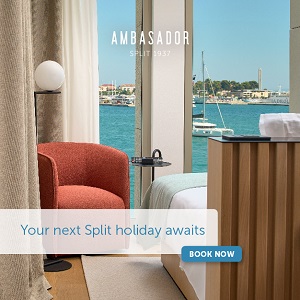Dubrovnik Visited by One of Most Luxurious Yachts in World
A truly stunning vessel visits Croatia's southernmost city of Dubrovnik.
Just recently we reported on Croatia having been placed on Bloomberg's prestigious list of five European countries which attract luxury mega-yachts, and it seems that Croatia is even managing to surpass the likes of Monaco.
Dubrovnik is no stranger to the rich and the famous and their enormous yachts. Roman Abramovich seems to love anchoring just off the coast of Croatia's southernmost town - Cavtat. While other destinations in Croatia are turning more and more successfully to nautical tourism, Croatia's top destination has been the destination for mega-yachts for years, and it seems that isn't about to change anytime soon.
Yet another luxury visitor has arrived in the Pearl of the Adriatic, and on one of the most luxurious yachts in the entire world.
As Morski writes on the 23rd of July, 2019, the super yacht ''Al Lusail'' owned by Tamim bin Hamad Al Thani of Qatar, sailed into Dubrovnik on Tuesday. It is a luxurious boat, 123 metres in length, with a total of 46 cabins, whose value is estimated at a staggering 300 million US dollars.
The length of the boat is very specific because it is only one metre shorter than that of the vessel belonging to his rich father who visited the southern Dalmatian city in 2016, according to a report from the local portal Dulist.
Make sure to follow our dedicated lifestyle page for much more. If it's just Dubrovnik and the extreme south of Dalmatia you're interested in, give Total Dubrovnik a follow or check out Dubrovnik in a Page.
Newly Renovated Fish Market in Dubrovnik's Peskarija Opened
As Morski writes on the 23rd of July, 2019, after six whole years, the renovated fish market was opened at Peskarija in Dubrovnik's Old City. It is a fish market built back in the 19th century in Dubrovnik's beautiful old port, and 207,000 kuna was invested into its reconstruction. Dubrovnik Mayor Mato Franković said that by restoring Peskarija's fish market, yet another important element of life in the historic core of Dubrovnik had been brought back to life.
The fish market was used for its actual purpose until an earthquake struck Dubrovnik back in 1979, and then it was converted into a building material warehouse. The roof was repaired in 1990, but it was damaged once again during the Homeland War, when Dubrovnik suffered some serious blows from the attacking JNA.
''It's a great honor to be able to attend the return of another element of life in the city today, in the very city itself. Six years ago, someone turned off the lights, closed the door, and said goodbye, Peskarija. Today, it may have seemed impossible to attain the minimum technical conditions and maybe some thought that this wasn't essential. But it is important, because this Peskarija represents the identity of the city,'' said Mayor Mato Franković, adding that it was equally important that a flower shop was restored in Dubrovnik's historic city centre.
''It is important that traditional crafts remain in the city, that they live in the city and live alongside their city. Ultimately, if we lose all urban elements, then we'll lose people. They are the greatest and most important asset of our city,'' concluded Mayor Franković.
Director Tomislav Tabak said that this project was small but very demanding because it had to be done in accordance with all of the strict conservation guidelines and instructions on the food trade at the highest of standards.
"Six years ago, the Peskarija wasn't in function and it was an eyesore. I was reluctant to accept the idea of rebuilding the fish market, and I didn't know what all the problems waiting for us were going to be. In conjunction with the conservators and the inspectorate, we realised this idea in six months.
Now fishermen can sell their catch in a lawful manner in a fish market that has existed for 200 years. That's why I would like to thank the Proto-Arch architectural office, the contractor and the entire Conservation Department and the Department of Sanitary Inspection, with whom we've thoroughly gone through every part of this fish market for the last six months. To the satisfaction of the citizens, we've now opened Peskarija,'' Tabak said, emphasising the fact that this is has been his favourite project since he became the director of the Dubrovnik Sanitat company.
Follow our dedicated lifestyle page for much more. If it's just Dubrovnik and the extreme south of Dalmatia you're interested in, give Total Dubrovnik a follow or check out Dubrovnik in a Page for all you need to know about the Pearl of the Adriatic.
A Digital Nomad Reflects on 63 Glorious Days in Croatia
July 22, 2019 - They are not tourists in the classic sense, but they do travel around and spend. A digital nomad reflects on 63 days in Croatia.
After 63 days in Croatia it is finally time to move on. We stayed at three different locations, all of them great in their own way, so I wanted to share the details for those that are interested in learning more. This country is so special with the amazing water, weather, and people and the food is some of the best I’ve found! Our next 45 day journey starts today, but here’s an overview of our stay here:
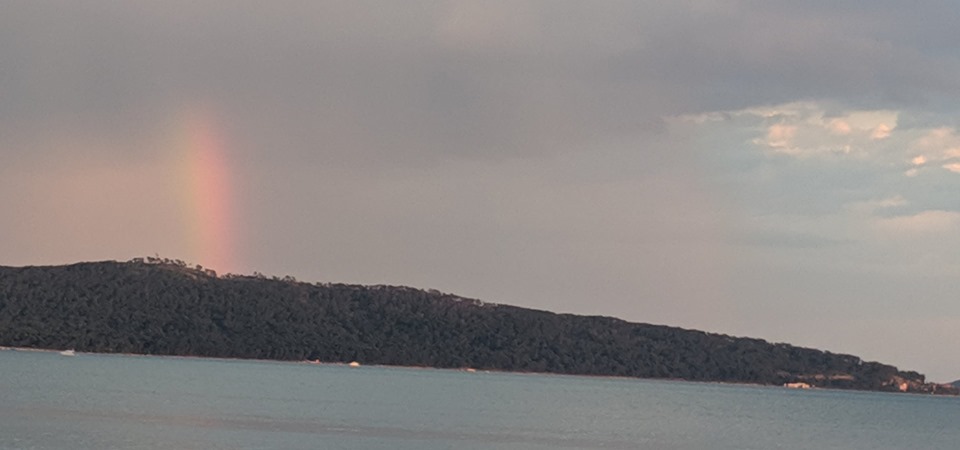
Leg #1: Kastel Kambelovac, just 20 minutes north of Split
We stayed in a very small one-bedroom unit with a direct view of the channel and a balcony that we ate on as often as possible. When we arrived May 15 it was a bit sleepy with not much activity and the weather was rainier and colder than usually, but within a few weeks it went from that to very hot, in the 90’s F. The energy of the city also changed come June, especially by June 15 which seemed to be the switch to summer. Within a few days people were everywhere, beaches were crowded, areas of the sea were roped off to delineate safe areas and the area became more bustling.
Split town, pretty easy to walk around when we arrived, also got busier and you could see more cruise boats all the time. When we first got here we weren’t that impressed, aside from the view and closeness of the water, but as we are now leaving we have become “part of the city” somewhat. We have conversations with restaurant people, some locals and I can see that over time it could grow on us. Learning the language, well, that’s another thing, as it is highly unlikely that we would learn Croatian beyond a few words. Very difficult and different than anything we were used to.
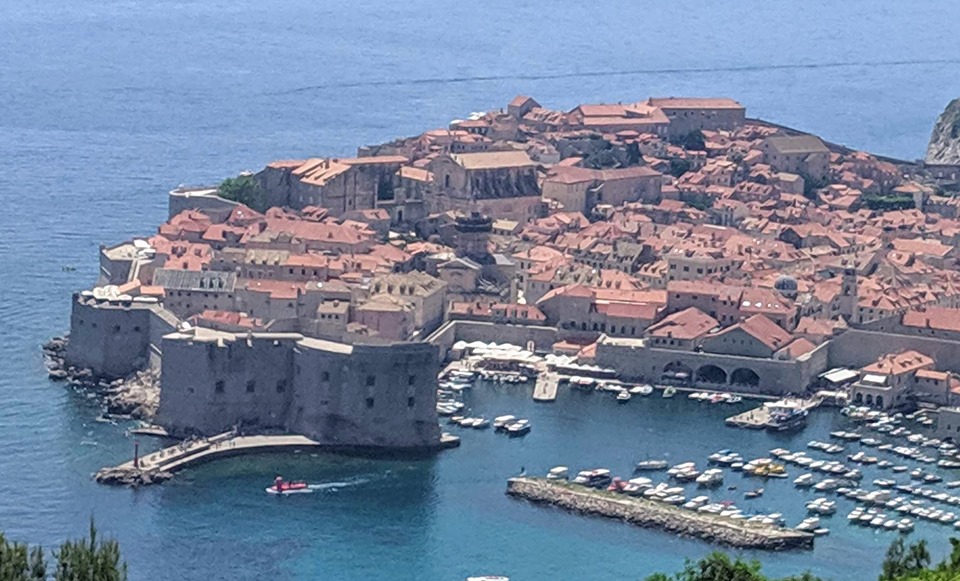
Leg #2: Dubrovnik, actually a small village called Plat just 10 minutes south
We were only there for a week and when we walked into our unit we flipped as the balcony expanded to an amazing pano view of the channel and sea from a very high distance above. The unit itself was small, but very clean, and aside from not have a complete kitchen, worked beautifully. We found an amazing restaurant 100 yards down the street and ate there several times for amazingly good prices considering what they charge in Dubrovnik proper. We liked Dubrovnik Old Town, but as warned, it was crazy busy and hot in summer. We found some great places to enjoy the water and the beauty of Croatia is that you merely have to take a ride along the coast, and when you see a place that looks good, you stop. Parking is never a problem and you can do it any way you can!
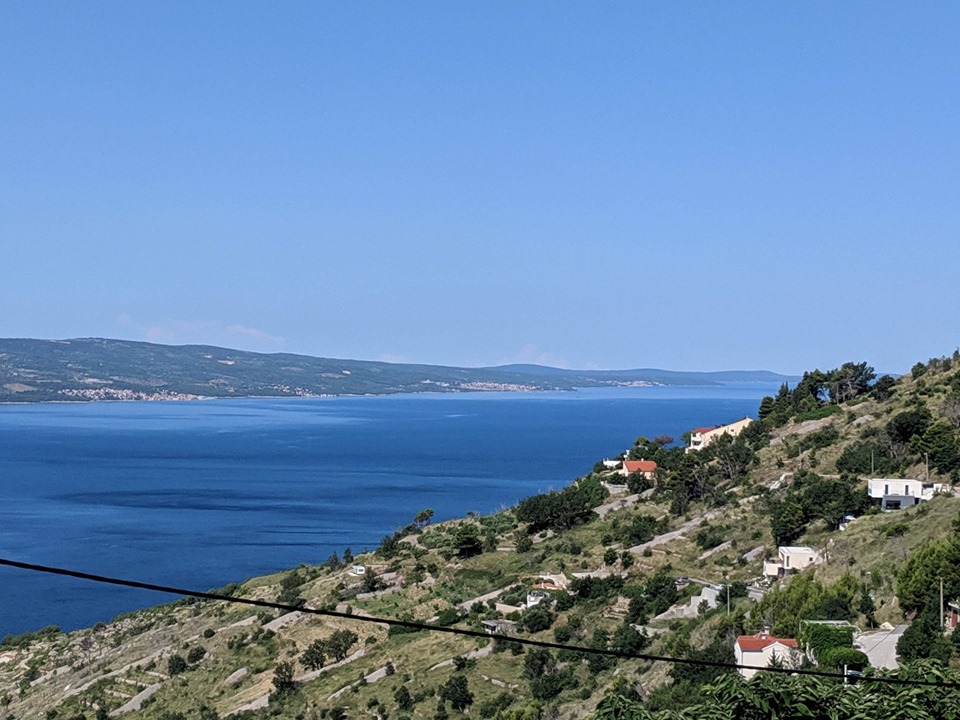
Leg #3, Lokva Rogoznica, a small village just south of Omis
This was the city whose name I could not pronounce, but loved immensely. As we rode into Omis the first time we, like everyone who does so, were amazed at the rock walls alongside the city. We were at this location for 10 days and this was a trip. The first time arriving we kept climbing up and up and up alongside the cliff wall. We finally get to this small village via several switchbacks and it looks deserted and empty. It mostly was but still enough people to create good energy and our unit was outstanding. We stayed with another couple for a novel experience, and each of us had two complete units with kitchens, baths, etc… Again, fantastic balcony very high up looking at the island of Brac. Several times rain arrived, we could see it doing so! And we watched lighting and heard thunder as though we were IN the storm. Pretty awesome.
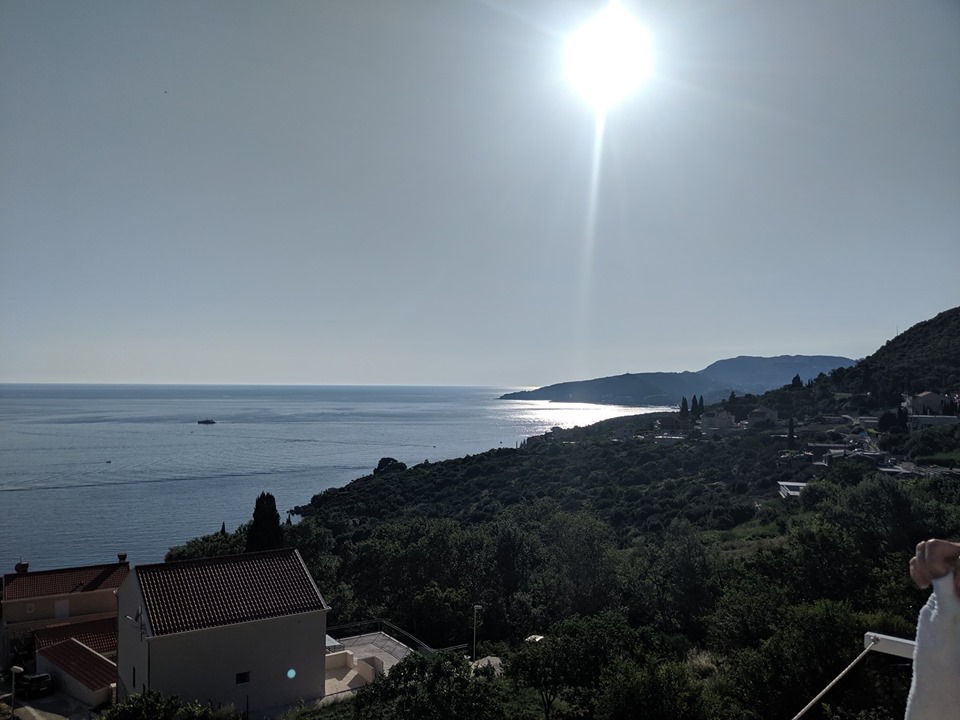
A car was required and we spent a lot of time at these beaches and in the town of Omis, plus did a great raft ride. We had a terrific guide and for about $35 spent 2.5 hours on the River Cetina. The only downside was my pixel phone was lost in the river (my bad) but otherwise, all good.
So, after 63 days the question is “Do we come back?” and the answer is a 1000% yes. Where, when are yet to be decided, but for anyone who lives or spends time in Croatia, you get it. For those that had no idea where it is, which included me just a year ago, get this destination on your vacation plan and bucket list. If you need help or suggestions on how to Travel Younger, just ask.
Norm Bour is a travel writer and blogger who teaches others how to “travel younger.” A Baby Boomer who permanently left the US in February 2019, Norm stays at different locations six weeks at a time, with no intention of stopping. He never traveled outside the US until 2016, but watched how the Millennials traveled affordably and with a great sense of adventure and fun. At age 64, he and his girlfriend decided to learn from those that were doing it right and is committed to inspiring Baby Boomers of any age to live their dream. Follow their journey at his Facebook blog under Travel Younger..
To learn more about the digital nomad opportunity in Croatia, check out the dedicated Total Croatia guide.
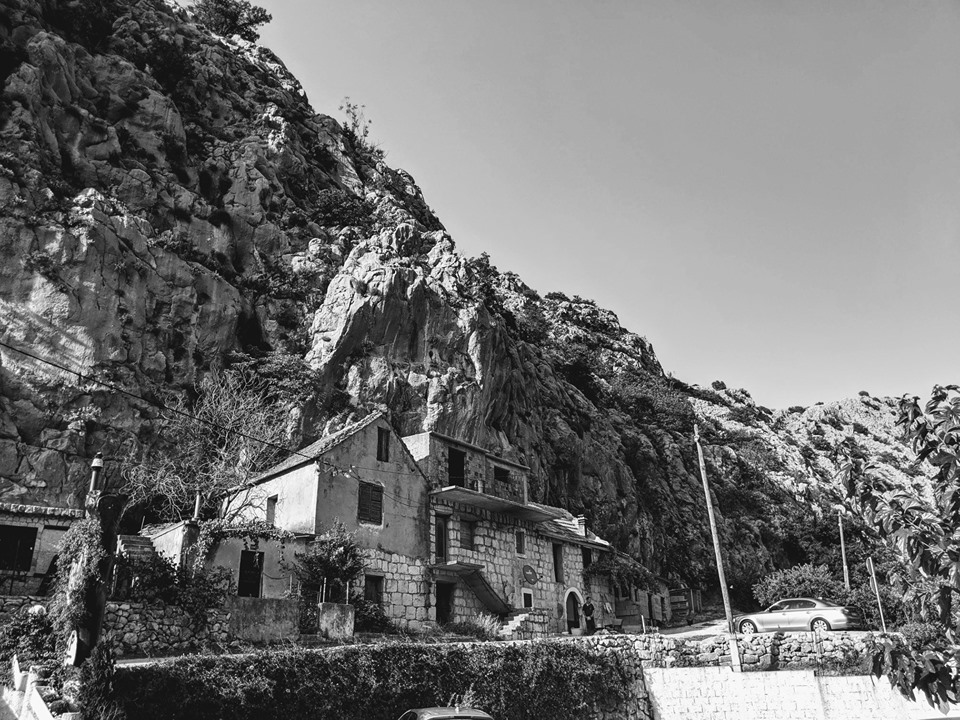
How Expensive is Dubrovnik and How Much Time Do You Need There?
July 22, 2019 - So how expensive is Dubrovnik and how much time do you need to visit? One travel blogger's view.
(Editor's note: A couple of years ago, TCN was a guest of the Dubrovnik Tourist Board for the Feast of St. Blaise, the patron saint of the city, and the absolute best time to visit Dubrovnik in my opinion. Over lunch, I asked how they dealt with the perception that Dubrovnik was expensive.
"Expensive compared to what? Is Dubrovnik more expensive than Venice, or Paris, or Madrid? This is how you should compare how expensive is Dubrovnik. You cannot compare it to Croatia." An interesting angle I had not considered before.
We are delighted to welcome Norm Bour to TCN. Norm featured in a recent interview as part of our digital nomad series - you can read his interview here - and offered to send us some observations about his time in Croatia. We start with a topic that is often hotly debated. One man's view on How expensive is Dubrovnik, and how long to you need to see it?
Welcome, Number 134! If you would like to write for TCN about the Croatia where you are, please contact us on This email address is being protected from spambots. You need JavaScript enabled to view it.)
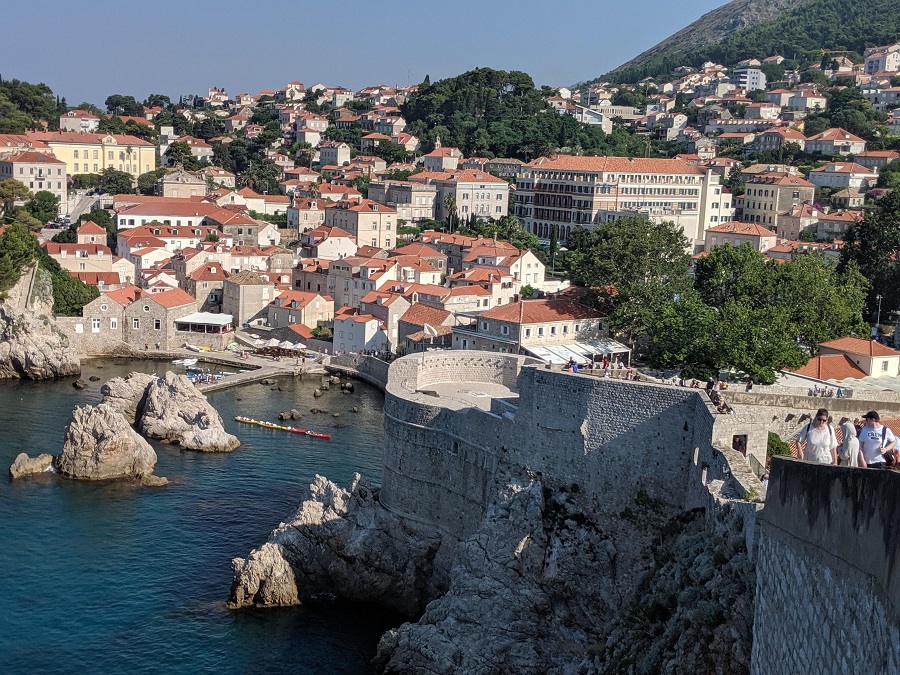
The expression says, “figures lie and liars figure,” but when it comes to figuring the differences in comparing what it costs to visit Dubrovnik versus many other cities in Croatia, we don’t need to lie.
Dubrovnik is expensive.
After spending six weeks around Split and Kastel Kambelovac we were quite happy with the differences between Croatia prices and what we spent in our prior city in California.
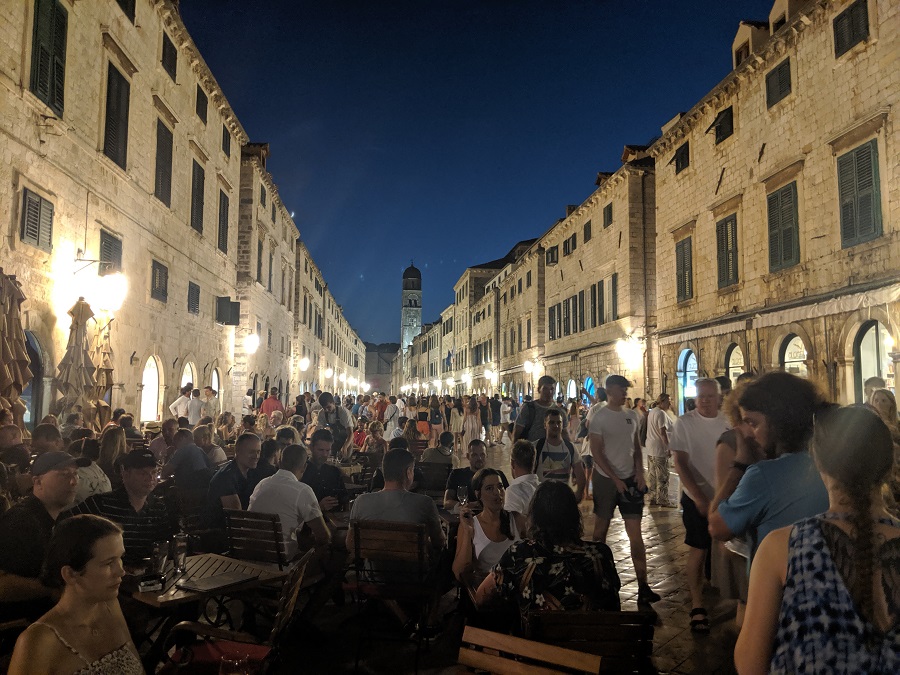
A “typical” California coffee at any shop would normally run about $3.00 to $4.00, whereas a white coffee (which we preferred) was about 12 kuna, about $1.82 in US dollars. Almost all the shops near Split were in that range, so when we had coffee in Dubrovnik we were shocked to find them at 28 to 32 kunas. I wasn’t sure if they used different water, imported their coffee from the moon or just plain took advantage of their customers who were there for just that once, and never to return. But common sense and annoyance made us realize that it was just because the cost of doing business behind the walls was expensive.
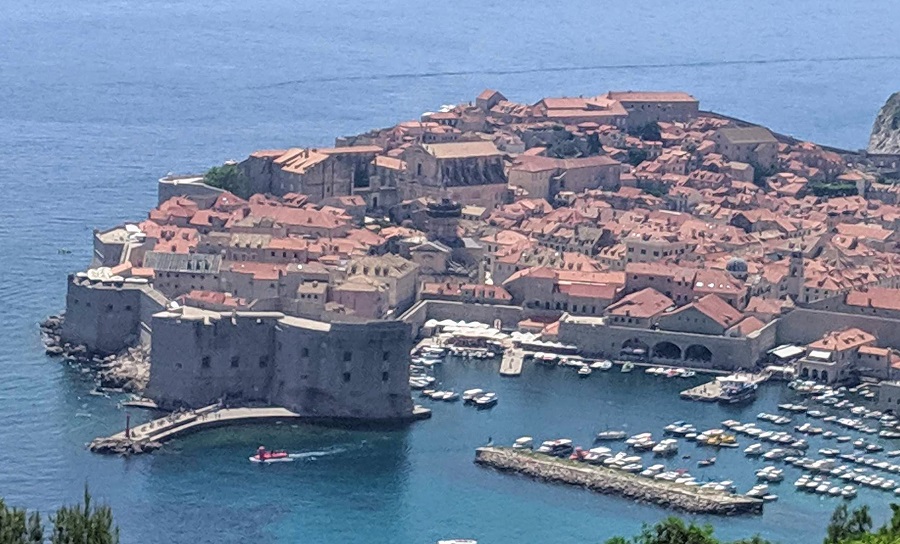
Overall we found food and drink prices to be 150 to 300 percent higher than other places we visited. Pastries, gelato and small meals were modestly more expensive, and a dinner for two was about 1.5 times more than what we were used to.
Aside from the food prices, another noteworthy figure is the number of visitors they get on an “average” summer day, which ranges from 8,000 to 10,000. This causes the locals and leaders in Dubrovnik great concern. The truth is, most of those visitors are grouped into just a few square miles and walking in the streets becomes a hot, dreary ordeal.
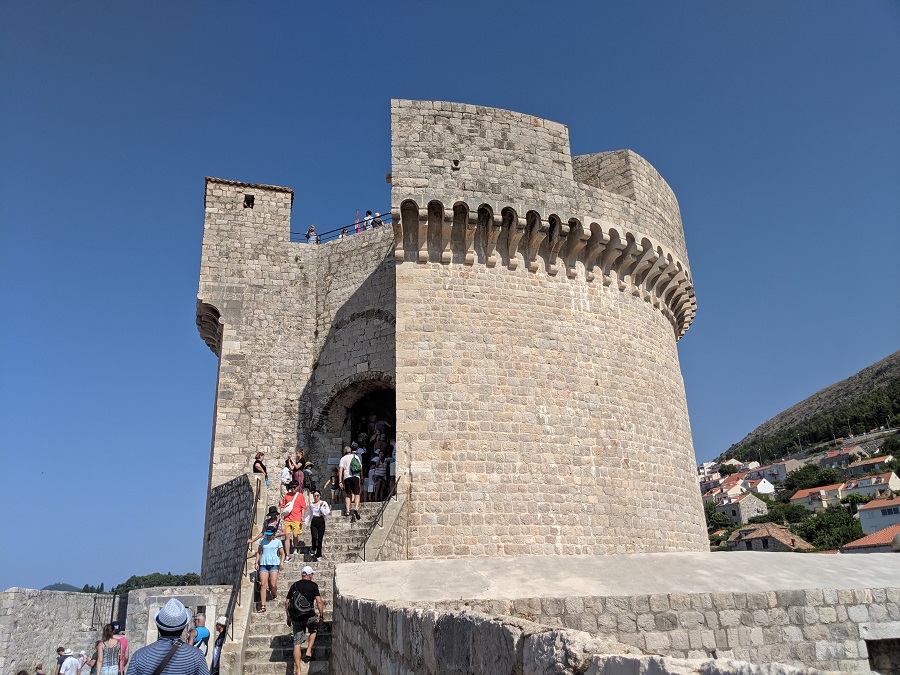
On one July day they measured over 8000 visitors landing just from cruise ships, even though there is a 5000 person limit from two allotted landings. Add in those that came via tour buses, ferries from other ports and auto traffic, you can figure that 10,000 per day throughout the summer is a realistic number.
Mayor Mato Frankovic seems to be focused and committed to controlling the excessive numbers. The question is, “How do you fix this?” Do you create a lottery system or introduce a tax during summer months?”
This last number is a random, arbitrary number but one that I see posted all the time on various blogs: “How long should you allow to visit Dubrovnik?”
There is no number that fits everyone so I can only share my own bandwidth and those of my friends whom I was with.
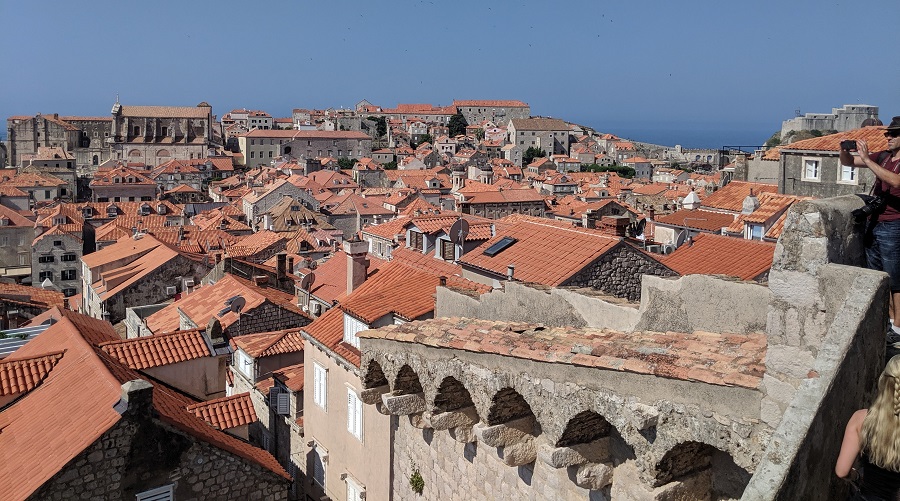
If you are a shopper, and love shopping for clothes, knick knacks and souvenirs, you could easily spend one entire day just doing that. There is no lack of vendors to choose from and they will happily offer their wares to take home.
If you love to eat (and who doesn’t?) there are multiple tiers of restaurants and cafes throughout the entire city. Climb up the stairs from the main boulevard and you will find a whole new row of eateries.
And then, there’s The Wall.
I thought for less than 30 seconds before I decided to pay the 200 kuna to walk the wall and I was glad for that. Even with the 32 plus degrees temps and bumper to bumper people, it was a unique experience. As a travel writer I have visited too many castles to count and this one ranks at the top, from the grandeur of the surrounding water to the majesty of the turrets of the Fortress Bokar, and the sense of history throughout the walk.
That walk requires two hours according to those that know, and I think that’s about right depending upon crowds.
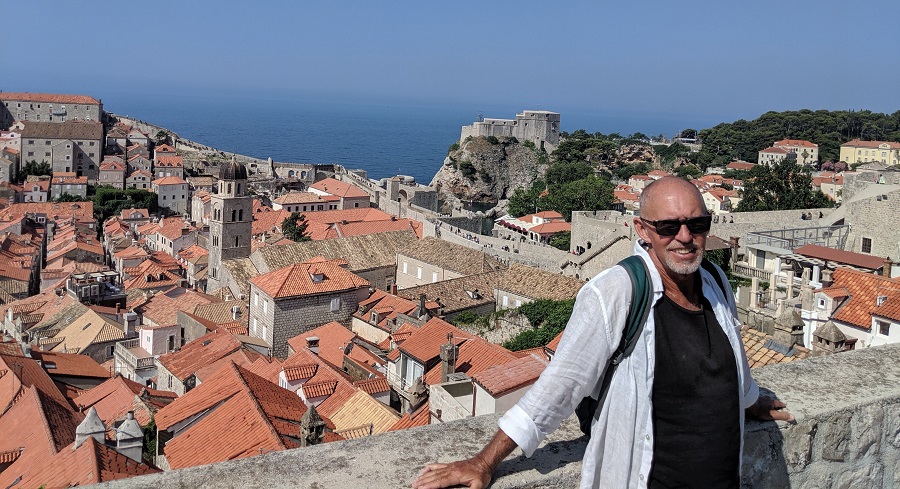
As to the question of how long, I think that one solid day to walk the walls, walk the streets and visit a few shops is probably enough. Add in some time for a coffee, ice cream or beer, along with at least one meal, and that fills an entire day. So with that said, I think an overnight stay is more practical.
Get there early in the morning, walk the wall while it’s still cool, enjoy a leisurely lunch, and go take a break and maybe a nap. There are plenty of lodging options in the city so you can usually walk to your room. Clean up, grab dinner and enjoy the vibrant nightlife and different perspectives in the dark and get enough rest to return the following day. How much time you spend on day two is dependent on what you’re into and want to visit in more detail.
What are your thoughts? IS 1.5 days enough or not enough to spend in the walled city??
Norm Bour is a travel writer and blogger who teaches others how to “travel younger.” A Baby Boomer who permanently left the US in February 2019, Norm stays at different locations six weeks at a time, with no intention of stopping. He never traveled outside the US until 2016, but watched how the Millennials traveled affordably and with a great sense of adventure and fun. At age 64, he and his girlfriend decided to learn from those that were doing it right and is committed to inspiring Baby Boomers of any age to live their dream. Follow their journey at his Facebook blog under Travel Younger.
To learn more about the Pearl of the Adriatic, check out the Total Croatia Dubrovnik in a Page guide.
Rovinj & Dubrovnik: Pearls of Istria, Adriatic as They Once Were (1973 VIDEO)
July 20, 2019 - Continuing our look at tourism in Croatia almost 50 years ago through archive video, a visit to Rovinj in 1973.
This article started out as a blog about Rovinj back in 1973, and the video shot by an Englishman on holiday which you can see below. Having done the same with Dubrovnik, I thought it would be fun to do a short nostalgic series on Tourism as It Once Was.
And then I noticed one of the comments below the video:
With the exception of people's clothes, this video could easily pass as 2018.
Which is not quite the same feeling you get with Dubrovnik these days.
Interestingly, Rovinj has the most overnight stays of any destination in Croatia, more than 3 million a year, while Dubrovnik has by far the most cruise ship visitors.
Which destination do you prefer these days, and why?
Dubrovnik as It Once Was: Austrian Tourist Films 1972 Summer Holiday
July 18, 2019 - As Croatia's peak season is in full swing, a look back to summer in Dubrovnik almost 50 years ago, through the lens of an Austrian tourist in 1972.
It was an era before Kings Landing and 2-3 cruise ships a day.
Before the siege of the city which destroyed many of its famous rooftops.
Tourism as it once was.
Fast forward almost half a century, and the scene could not more different, with thousands of tourists packing into the old town from bus day trips and those cruisers.
The Daily Telegraph published an article earlier this month called Has tourism killed Dubrovnik? Our expert reports on the fight to save the city's soul.
That tourism in Croatia needs a reset is becoming clearer each year, with Dubrovnik perhaps the leading example.
Sometimes it is best to take a step back and remember what it was that attracted people to Dalmatia in the first place.
Authenticity is one of those things.
An Austrian tourist shot his summer holiday back in 1972. Looks nice, doesn't it?
To learn more about the Pearl of the Adriatic, visit the Total Croatia Dubrovnik in a Page guide.
Flights to Croatia: British Airways Boosts Winter Traffic to Croatia
July 16, 2019 - The latest news from around Croatia’s airports for new flights to Croatia with updates from Zagreb and Dubrovnik airports.
Avio Radar reports that British Airways, a Oneworld member, will increase traffic on both lines to Croatia for their winter flight schedule.
The route between Zagreb and London Heathrow Airport will have two additional flights, on Fridays and Sundays. A total of nine flights per week will be offered this winter.
The route between Dubrovnik and London Gatwick Airport will feature four flights per week in the period immediately after the end of the summer flight schedule. Thus, for the Christmas and New Year holidays, there will be three flights offered per week, or one more than last year. Likewise, in February and March next year, three flights will be on offer per week instead of last year’s two trips. British Airways will fly to Dubrovnik on Mondays, Wednesdays, and Fridays, and in November this year on Sundays.
Furthermore, Avio Radar reports that Korean national carrier Korean Air, a member of SkyTeam, will further boost traffic on the Zagreb-Seoul Incheon line. In addition to the existing three flights per week, on Tuesdays, Thursdays, and Saturdays, the fourth-weekly flight will be introduced on Fridays. This reinforcement will operate from August 30 to September 20, 2019.
Although the Boeing 787-9 Dreamliner aircraft will fly on the existing flights in September, an Airbus A330-200 will work on the additional flight on Fridays.
TCN recently reported that Croatia welcomed 81 new scheduled and charter routes from 24 different markets in the peak summer months, which are mostly operating from Germany, the United Kingdom, France, Italy, and the Netherlands.
Thus, three of Europe’s biggest low-cost airlines - EasyJet, Norwegian Air Shuttle, and Ryanair, are said to be driving Croatia’s five busiest airports this summer.
To read more about travel in Croatia, follow TCN’s dedicated page.
HNB and IMF Organise Conference on Demographic Challenges in Dubrovnik
ZAGREB, July 14, 2019 - The Croatian National Bank (HNB) and the International Monetary Fund (IMF) have organised the conference entitled "Demographics, Jobs and Growth: Navigating the Future in Central, Eastern and Southeastern Europe" which starts in the Adriatic resort of Dubrovnik on Sunday.
This year’s conference "focuses on labour market and demographic challenges, the future of labour, and policies needed to sustain growth and reach Western European levels of income," the HNB says on its web site.
"During the first part of the conference, panellists will discuss the economic developments and capacity constraints arising from labour market shortages and skill mismatches.
"The issues of ageing population, emigration and the impact of these demographic shifts on income growth and convergence, will be addressed in the second part of the conference. Panellists will also discuss the potential role of technology, alongside other policies, in mitigating the adverse impact of demographic trends," the central bank says.
Tao Zhang, Deputy Managing Director of the IMF is quoted as saying that "the conference will address one of the most significant challenges for the region – a shrinking and aging population."
Apart from the IMF and CNB representatives, in attendance at the event will be Croatian Prime Minister Andrej Plenković and about fifteen CESEE central bank governors and finance ministers, representatives of the World Bank, the European Commission, the Bank for International Settlements and other institutions, as well as experts from the universities of Oxford, London and Tartu.
More news about the HNB can be found in the Business section.
Social Network Analysis: Dubrovnik and Split Most Popular Tourist Destinations in Croatia
July 13, 2019 - Mediatoolkit analyzed the popularity of Croatian tourism on social networks. The results show that Dubrovnik and Split are a hit on social media.
The Croatian National Tourist Board recently published the tourism numbers for June. Although it was rumored that this tourist season would be one of the weaker in several years, data for June still shows that the number of tourists increased in the first six months. Compared to last year, Croatia was visited by 6% more tourists, while the number of overnight stays grew by 3%.
Given the different perspectives on what this year's summer season will be, the Zagreb-based technology company Mediatoolkit analyzed how Croatia was perceived on social networks from 10 June to 10 July.
Namely, Croatia was mentioned 72,869 times during this period, which represents an increase of 222.13%. On a daily level, Croatia was mentioned an average of 2,400 times, while this number will increase as the season moves forward. For comparison, one of Croatia’s major tourism competitors, Italy, was mentioned about 7,500 times a day in the same period, while the numbers for Greece and Turkey are similar to Croatia.
Compared to the previous period, the number of impressions increased by as much as 18,842% and now exceeds 34 million. The good news is that Croatia, as a tourist destination, is mentioned on the web and social networks around the world.
Most of the announcements come from the United States, the United Kingdom, Switzerland, Germany, and Italy, though they are just some of the countries that have increased the number of tourist arrivals this year according to HTZ’s data. Croatia is written in Italian the most on Twitter, while German and English are the highest on Instagram.
The majority of the mentions about Croatia were written in a positive context, namely 89.2%. Tourists mostly praise the natural beauty and the sea, and the hashtag #croatiafulloflife was used 13,273 times.
Instagram is by far the most widely used channel that publishes about Croatia. According to the analysis, 84.8% of the mentions come from Instagram, while Twitter is the second most common channel with 7.5%.
Interestingly, Croatia was declared the most sought after country on TripAdvisor in 2019. This news attracted the attention of international media such as Forbes, but in Croatia, this news was not shared much in the media.
The top three destinations in Croatia with the largest number of visitors in the first six months, according to HTZ’s data, are Rovinj, Dubrovnik, and Zagreb. When it comes to social networks and the web, only two cities are mentioned the most - Dubrovnik (12,759 mentions) and Split (7,313 mentions). On the other hand, the most visited town of Rovinj has 3,898 references, while Zagreb has 2,592.
Dubrovnik’s mentions are mostly associated with the popular Game Throne series, which is not surprising given that it has significantly increased the popularity of Dubrovnik. King's Landing was mentioned 4,000 times, of which 741 are related to Dubrovnik and 321 to Croatia.
The sudden increase in the number of social network announcements that occurred during the summer season is a double-edged sword. On the one hand, such growth is only confirmed by the marked tourist seasonality and the lack of year-round tourism. On the other hand, the more optimistic side, recommendations are the best way of promoting the country, and tourists full of praise about the beauties of Croatia can motivate others to come. But is everyone interested in just the sun and the sea? We’re not so sure.
Year-round tourism is to some extent present in parts of Croatia. Zagreb is one of the few examples in which attendance is relatively consistent throughout the year, which confirms the latest data. One of the reasons is that throughout the year, Zagreb offers a variety of activities tourists find interesting - like Advent, it's main winter attraction which draws in more and more tourists every year and has been more popular on social networks than Vienna. Various events take place in Zagreb in the summer, the most famous of which is the InMusic festival which attracts a large number of foreign visitors.
Croatia regularly offers excellent opportunities that should be better exploited both for its promotion and to create better content. For example, winning second place at the World Cup, taking home the Davis Cup title, and the final season of Games of Thrones are just some of the things that have influenced the arrival of tourists and can transform Croatia into a year-round tourist sensation.
To read more about travel in Croatia, follow TCN’s dedicated page.
18 Percent More Cruise Ships in Croatia than Last Year
In the first five months of 2019, Croatia welcomed 171 or 18 percent more international cruise ships than in the same period last year, according to data from the Central Bureau of Statistics (CBS).
Furthermore, Croatia also welcomed a 19 percent increase in passengers or 247,500 passengers in the first five months of 2019, reports T.portal on July 8, 2019.
Croatia saw 43 or 3 more cruise ships which traveled to Croatia on round trips than in the first five months of 2018 - and they also stayed longer than last year, for 386 days or a 25.3 percent increase.
The cruise ships came under the flags of ten countries, though most trips were made under the flag of Malta, which recorded 41 ships and 34,000 passengers traveling to Croatia in the first five months.
Although in the second place by the number of round trips (36 in the first five months), cruise ships under the Italian flag brought far more passengers, or the most among all the cruise ships, which is a little more than 85,000.
In third place is the flag of Panama, with 26 round trips and nearly 59,000 passengers.
When looking at months, the highest number of cruise ships on the Croatian Adriatic was recorded in May, when there were a total of 88, which is three trips or 3.5 percent more than in May last year, while the most significant increase of these trips, or 48.5 percent, was achieved in April, when there were 49.
Unlike last year when some months saw cruise ship trips in the minus, this year saw more cruise trips this year than in the same month of the year before.
Namely, January saw five cruise ships travel, which is a 25 percent increase compared to January 2018. February welcomed 11 trips, which is a plus of 22.2 percent, and March, which welcomed 18 cruise trips, is nearly 30 percent better than the same month in 2018.
As usual, Dubrovnik was the most visited hotspot for cruise ships this year, with 124 visits. Split is in second with 76 of these visits, while Zadar saw 32, Korcula 30, Šibenik 25 and Hvar 20. Less than ten visits were recorded in Rovinj, Ploče, Stari Grad, Pomena and Pula.
But this is anything but good news, for various reasons.
For one, TCN reported last week that the "Transportation and Environment" Association conducted extensive research on air pollution in European destinations in ports which accept cruise ships in 2017, which presented the results of research from Croatia's top destination - Dubrovnik.
The authors of the study showcased the observed pollution levels in Dubrovnik in figures and tables, to make them as clear as possible. In the study, the release of harmful particles of sulfur and nitrogen oxide was compared with that produced by the number of registered vehicles present at cruising destinations.
According to the data, 27,173 vehicles were registered in Dubrovnik at that time. During 2017, in the port of Gruž, forty such of these vessels sailed on round trips, spending a total of 2,791 hours moored, and during that time, 2,523 kilograms of contaminated particles were discharged into Dubrovnik's air.
During that same time, the 27,173 vehicles registered in the Dubrovnik area released 11,561 kilograms of exhaust gases into the air. Translated into basic percentages: 20.1 percent of the air pollution in Dubrovnik comes directly from cruise ships.
When considering the release of harmful compounds such as sulfur and nitrogen oxides, during those 2,791 hours of cruise ships being moored in Gruž, they released a massive 140,259 kilograms of nitrogen oxide into the air, while 27,173 registered vehicles during that same year released 100,174 kilograms of the same harmful compound.
During their stay, cruise ships released 6,344 kilograms of sulfur oxide into Dubrovnik's air, and passenger cars released 331 kilograms of the same compound during that time.
But Dubrovnik isn’t the only polluted cruise ship destination, as Rijeka and Split made the list, too. You can find the full study at Transport & Environment.
Some Croatian travel agencies are taking a symbolic stand to protest this cruise ship pollution, like Secret Dalmatia, which you can read more about on TCN.
To read more about travel in Croatia, follow TCN’s dedicated page.

